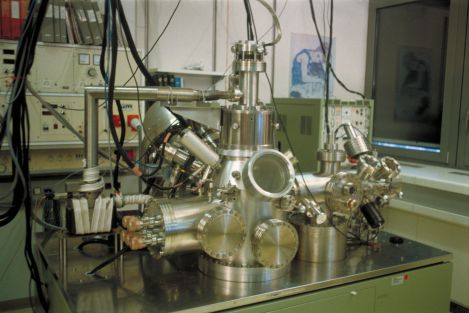Interaction of beryllium with hydrogen plasma - nuclear fusion first wall investigations
Beryllium is one of the most promising candidates as material for
the first wall of future nuclear fusion devices. However, the
processes that take place on the wall surface in such an
environment are not fully investigated yet.
We are concentrating on the question whether an oxide layer will
develop on the beryllium surface under these conditions and if so,
how it influences the interaction with the plasma, especially the
retention of hydrogen in the bulk.
Previous work
The first step in this project was the determination of the
oxidation kinetics of beryllium in air. This consisted of
determining the thickness of the oxide layer of beryllium samples
that were heated for durations between 1 and 50 hours at
temperatures up to 600 °C.
The samples were heated in our tubular furnace, measurement of the
oxide layer thickness was done by sputter depth profiling in our
Auger spectrometer. For this purpose, a fine polished sample
surface is needed. As beryllium dust is highly toxic, we set up a
glove box with a polishing machine including a closed water circuit
for wet polishing.
According to our results, the oxide growth of beryllium in air
follows a square root law, as is expected for diffusion limited
oxidation, with an activation energy of 1,16 eV.
Need caption.

Current investigations
We attached a hydrogen supply and an R.F. plasma generator to the
tubular furnace to simulate the conditions in the plasma edge
region of a fusion reactor (which is possible only to a certain
degree). The first heating cycles (up to 400 °C) in hydrogen
plasma showed that previously thick oxide layers are reduced by a
certain amount, but oxygen-containing impurities in the furnace
(water vapour) cause previously thin oxide layers to grow,
resulting in a constant medium oxide thickness for all samples at
the end of these experiments.
The next important step will be to establish a relation between the
amount of impurities in the furnace and the final oxide thickness.
After that, the amount of hydrogen that the beryllium samples take
up during these plasma treatments will be measured by outgasing
experiments. The final goal (for the time being) is to find a
dependence of this hydrogen retention on the thickness of the oxide
layer that develops during plasma exposure.
